|
In air and room temperature:
Speed of sound is constant: 340 m/s
What happens if the sound source moves?
The sound itself does not go faster!
Imagine going by while
you are standing aside oberving.
What do you hear?

When the sound source moves, the wave in front gets compressed.
===> the wavelength becomes smaller.
===> the frequency becomes higher.
When the sound source moves, the wave behind gets `extended".
===> the wavelength becomes larger.
===> the frequency becomes lower.
 General Phenomenon : General Phenomenon :

The phenomenon of the Doppler effect can be quite easily explained with wave front graphs. To get the
quantitative change in frequency, we need to some math.
 Moving Source and
Stationary Observer Moving Source and
Stationary Observer
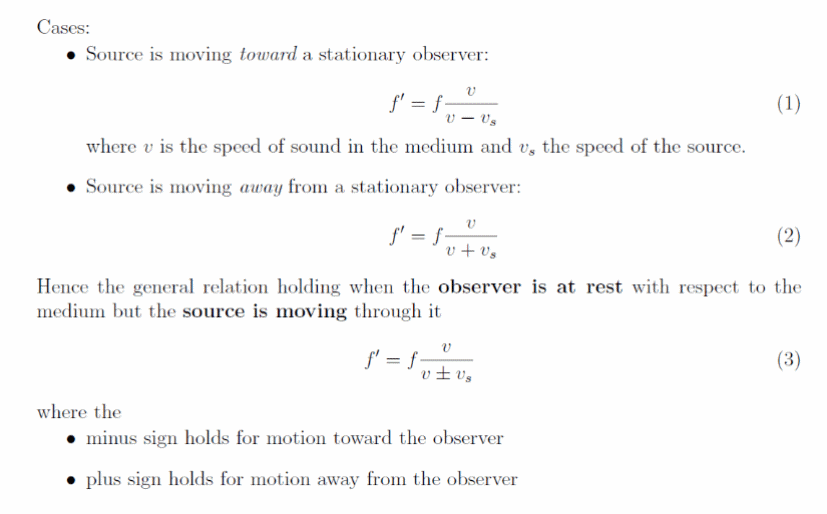
Here v is the speed of sound and vs the speed of the souce.
The frequency emitted by the souce is given by f, and the frequency heard by the observer
is f'.
 Sationary Source and
Moving Observer Sationary Source and
Moving Observer

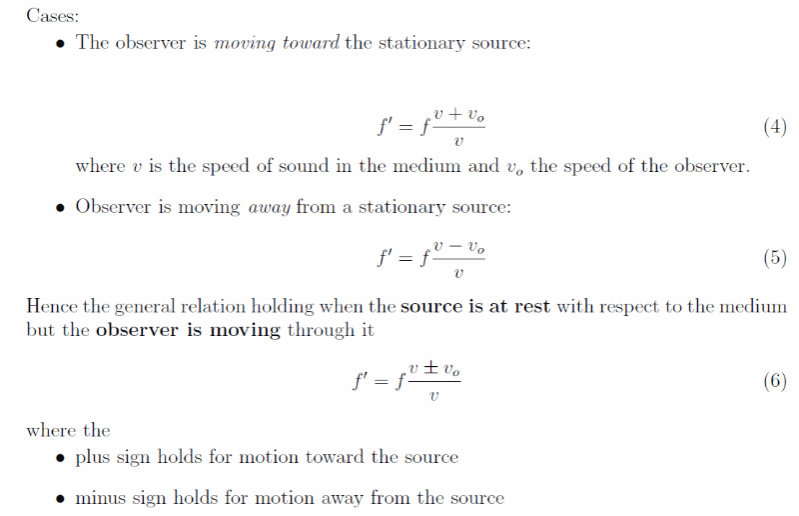
Here v is the speed of sound and vo the speed of the observer.
The frequency emitted by the souce is given by f, and the frequency heard by the observer
is f'.
 Moving Source and
Moving Observer Moving Source and
Moving Observer
In the most general case the source and the observer are moving, either towards
each other or away from each other.
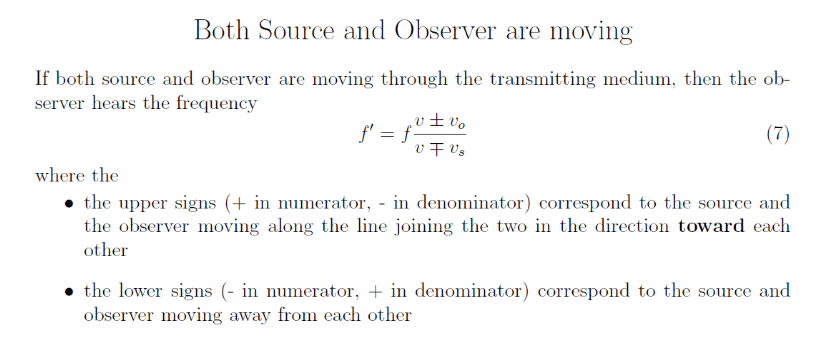
Here v is the speed of sound, vs the speed of the souce, and
vo the speed of the observer
The frequency emitted by the souce is given by f, and the frequency heard by the observer
is f'.
Example how to determine the relative speed
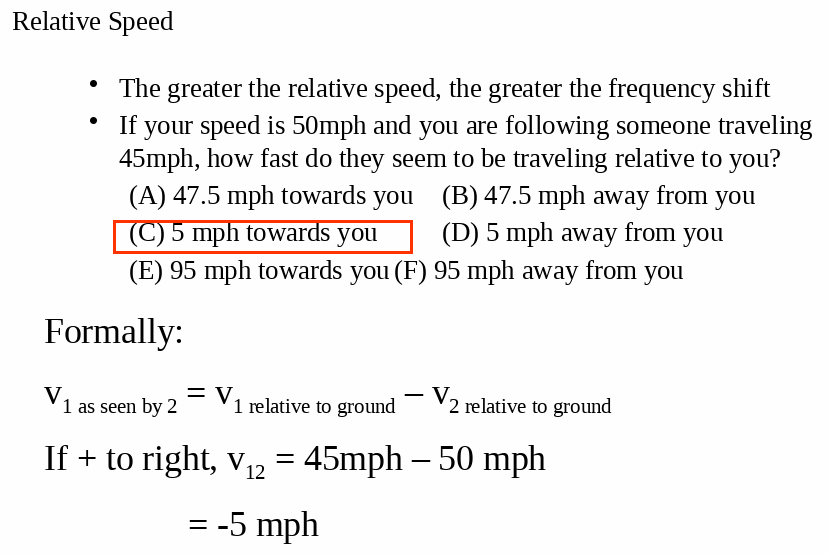
Consider an ambulance driving along the road at 35 m/s. Two cars drive towards
the ambulance on the opposite lane, one car parks in the lane of the ambulane and
one car drives as fast as the ambulance.
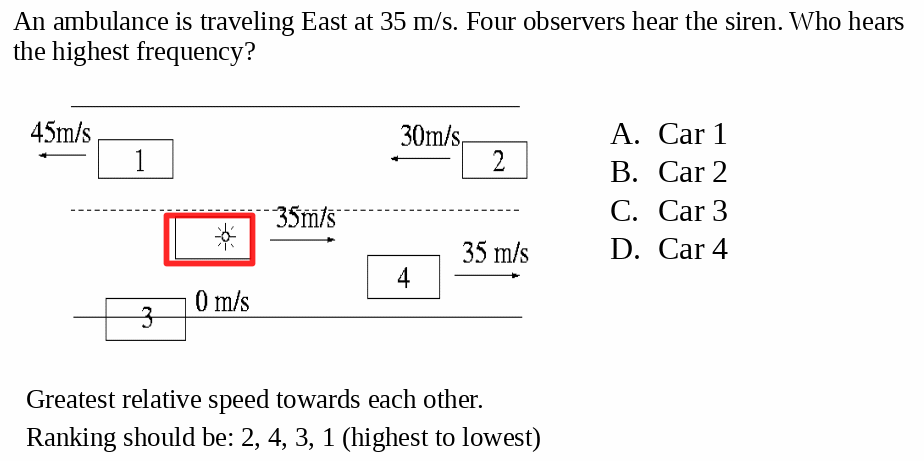
Example problems for Doppler Effect
 Some vocabulary: Some vocabulary:
- subsonic: the speed v is less than the speed of sound.
- sonic: the speed v is equal to the speed of sound.
- supersonic: the speed v is greater than the speed of sound.

| 



 Doppler Effect
Doppler Effect
 General Phenomenon :
General Phenomenon :
